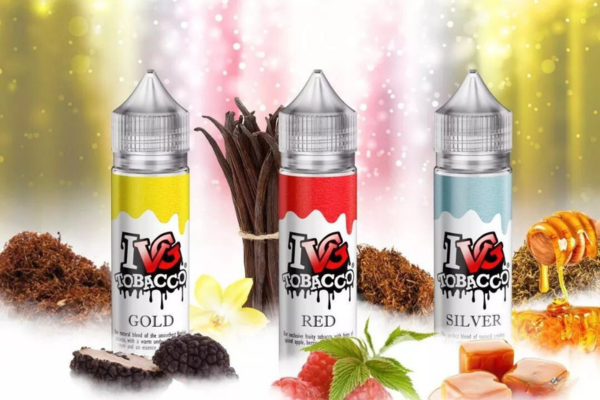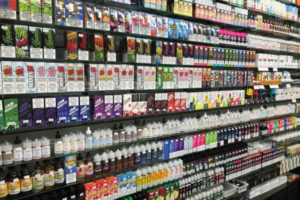Introduce
Vapes have become a popular alternative to traditional smoking, but many users have noticed that they emit a crackling or popping sound. This phenomenon, while common, often raises questions about its causes and effects. Understanding why vapes make these sounds is not only interesting but also crucial for a better vape experience. We break down the reasons behind this and how they affect your vape.
Why does my vape make noise?
The crackling and popping sounds you hear from your vape are created by the heating process of the e-liquid coming into contact with the coil. As the vape liquid is heated by the coil, it is converted into vapor, a process that produces audible sounds. It is important to recognize that these sounds are a normal part of vape operation and state that your device is working as intended.
Type of vape liquid and popping sounds
The type of vape liquid you use plays a significant role in the intensity and frequency of these sounds. vape liquids are made up of propylene glycol (PG) and vegetable glycerin (VG), and their ratio affects your vape experience.
Liquids that are higher in PG tend to be thinner and produce a more pronounced popping sound, while VG-heavy liquids are thicker and may produce a softer sound. Additionally, the addition of flavor additives can alter the characteristics of the vape liquid, further affecting the sound dynamics during vaping.

Vape power output
The power setting of the vape is another key factor. Higher power settings heat the e-liquid faster and will result in louder pops. , lower power settings will provide a quieter experience but will affect vapor production and flavor intensity. Finding the right balance is key to optimizing sound and quality.
Vape coil types and sound levels
Different types of coils (e.g. sub-ohm coils and ceramic coils) and their condition (new vs. old) can also affect the sound produced by a vape.
Since newer coils heat vape oil more, they usually produce a clearer, louder sound. Over time, these sounds may change or diminish as the coil wears out. Regular maintenance (including replacing coils) is critical to maintaining sound quality and the vape experience.

The physics behind vape sounds
Taking a deeper look, the physics of vapes, including factors such as airflow, coil temperature, and the boiling point of the e-liquid, play an important role in the sounds produced.
External factors such as ambient temperature and altitude can also affect the sound of a vape. For example, colder environments can result in a different crackling sound compared to warmer environments.
Normal and abnormal vape Sounds
It's important to distinguish between normal operating sounds and those that may state a problem. Regular, soft crackling sounds are usually harmless, but loud pops or continuous noise may cause problems such as coil flooding or device malfunction.
Normal vape sounds
Soft popping sound: A slight crackling or popping sound is typical when taking a puff. This sound occurs because the vape oil is being heated and vaporized by the coil. It is like the sound of boiling water and indicates the interaction between the e-liquid and the heated coil.
Slight Hissing Sound: A slight hissing sound while inhaling can also be considered normal. It is usually a sound made by the vapor as it passes through the device's air passages.
Intermittent pops: Occasional pops are common and nothing to worry about. This usually happens when e-liquid droplets hit the hot coil and vaporize.
Vape sound abnormalities
Loud popping sound: If the popping sound is too loud, it may state a problem. This can happen if the vape is overheating, the e-liquid is too thick, or the coil is flooded with too much e-liquid.
Gurgling: Gurgling may state that the e-liquid has flooded the coil or airway. This can affect vaporization efficiency and may lead to leakage.
Continuous high-pitched chirping sound: This is not a typical sound of a vape and may state an electrical problem. It is recommended to stop using the device and consult a professional or the manufacturer.
No sound and poor vapor production: If the device is quiet and produces little to no vapor, it could mean that the coil is not heating up. This could be due to a faulty coil, a battery problem, or a connection issue within the device.
Tips for dealing with unusual sounds
Check the vape oil: Make sure you are using the right type of vape oil for your device. Thicker liquids need more powerful devices or coils designed for high VG liquids.
Check the coil: If the coil is old or appears damaged, you need to replace it. Make sure it is installed and compatible with your device.
Adjust the power setting: If your unit has an adjustable power setting, try a lower setting to see if it reduces noise.
Ensure Proper Filling: Avoid overfilling the tank and make sure the vape oil is at the correct level.
Device Maintenance: Regular cleaning and maintenance of your device can prevent many of the problems associated with unusual sounds.
How to make your vape quieter
Ways to reduce the sound of vapes in normal vape sound situations
- Choose a vape oil with the right PG/VG balance: Choosing a vape oil with a lower PG (Propylene Glycol) content can help to reduce the popping sound that is often encountered when vaping vapes.
- Lower the power setting: By lowering the power provided to the coil, you can reduce the prominence of the popping sound. This is especially workable for vapes that allow for power adjustments.
- Changing coil resistance: In the field of customized vapes, replacing low-resistance coils with high-resistance coils will reduce popping and noise.
- Reducing airflow: Utilizing the airflow control feature on a vape to limit air entry can play a significant role in reducing popping sounds.
- Adjusting vaping intensity: A brief surge in vaping intensity can lead to louder pops. These sounds can be mitigated by reducing the intensity of vaping the vape.
- Shorten the duration of the draw: Keeping the draw short can reduce popping and noise during vape use.
Conclusion
While crackling and popping sounds from vapes are normal and usually nothing to worry about, understanding the factors behind these sounds can enhance your vape experience. By considering the type of e-liquid, power settings, coil type, and the basic physics of vapes, you can customize your device to achieve the best balance between sound, flavor, and vapor production. If you need a customized vape, contact us for a free vape sample.







